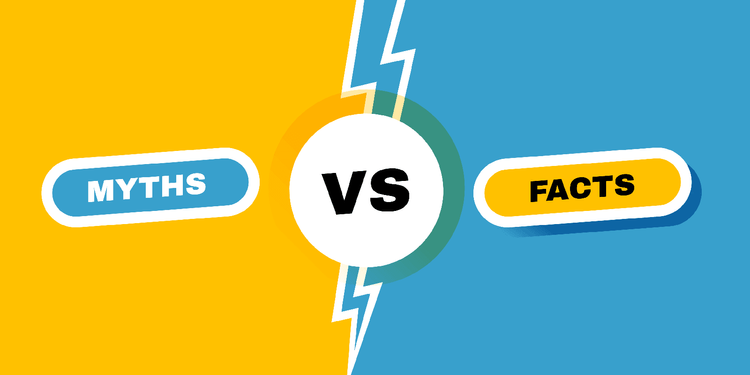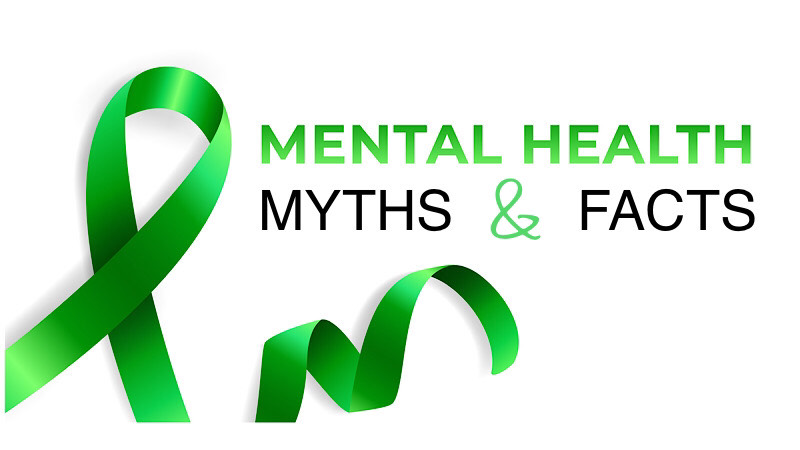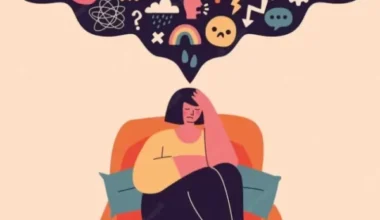Mental health is an essential part of our overall well-being, yet it remains one of the most misunderstood aspects of healthcare. Misinformation about mental health can be harmful, leading to stigma, discouraging people from seeking help, and even worsening the struggles of those affected.
In this article, I will debunk some of the most common mental health myths and uncover the truth behind them. By understanding these facts, we can help break the stigma and create a more supportive and informed society.
Let’s explore the most common mental health myths and facts…
Key Takeaways
- One in five Americans has suffered some sort of mental illness, with one in twenty-five experiencing significant mental illness, such as schizophrenia or bipolar disorder.
- Mental health conditions can affect anyone, regardless of strength or willpower.
- Therapy can benefit anyone, not just those with severe disorders.
- Mental health conditions can be managed effectively with proper care. Many people recover completely or find ways to live fulfilling lives while managing their condition.
The Most Common Mental Health Myths and Facts

Myth #1: Mental health issues aren’t real illnesses
Fact: Mental health disorders are legitimate medical conditions, just like diabetes or heart disease.
Many people still believe that mental health struggles are simply a result of someone being “too emotional” or “weak-minded.” However, scientific research has proven that mental health disorders are real medical conditions, just like physical illnesses such as diabetes or heart disease.
Brain imaging studies have shown that mental disorders like depression, bipolar disorder, and schizophrenia involve structural and chemical changes in the brain. These disorders can be influenced by genetics, brain chemistry, trauma, and environmental factors.
According to the World Health Organization (WHO), mental disorders affect one in eight people worldwide.
They occur due to biological, psychological, and environmental factors, including:
✔ Brain chemistry imbalances
✔ Genetic predisposition
✔ Trauma and stress
Research from the National Institute of Mental Health (NIMH) shows that conditions like depression and schizophrenia are linked to detectable changes in brain activity. Advanced imaging scans confirm that mental illnesses are real medical conditions, not just emotions or personality flaws.
Dismissing mental illness as “not real” only makes it harder for those suffering to get the help they need. Just as you wouldn’t ignore a broken bone, mental health conditions require proper care and treatment.

Myth #2: Only weak people struggle with mental health
Fact: Mental health conditions can affect anyone, regardless of strength or willpower.
Some people believe that those who struggle with mental health issues are simply not strong enough to deal with life’s challenges. However, mental illness has nothing to do with willpower or personal weakness.
Mental health disorders can affect anyone—regardless of intelligence, success, or personal strength. Some of the strongest and most influential people in history, including world leaders, athletes, and artists, have struggled with mental health conditions. Seeking help takes immense courage, and addressing mental health issues is a sign of strength, not weakness.
Some of the strongest individuals in history have openly spoken about their mental health battles, including:
✔ Winston Churchill (depression, “black dog” episodes)
✔ Serena Williams (postpartum depression)
✔ Dwayne “The Rock” Johnson (depression and anxiety)
The American Psychological Association (APA) states that resilience and mental health challenges are not opposites—seeking help is a sign of courage, not weakness.
Myth #3: People with mental illness are dangerous and violent
Fact: The majority of people with mental health disorders are not violent.
Movies and media often portray people with mental illness as dangerous, but this stereotype is far from the truth. In reality, individuals with mental health disorders are much more likely to be victims of violence than perpetrators.
According to studies, only a small percentage of violent crimes are committed by individuals with mental illnesses. The APA states that only 3%-5% of violent crimes involve people with mental disorders. In contrast, people with severe mental illnesses are 10 times more likely to be victims of violence than the general population.
The vast majority of people with conditions such as depression, anxiety, and schizophrenia are nonviolent and simply trying to manage their symptoms while living normal lives.
Myth #4: Therapy is only for people with severe mental illnesses
Fact: Therapy can benefit anyone, not just those with severe disorders.
Many people assume that therapy is only for individuals with extreme mental health conditions. In reality, therapy can be helpful for anyone, regardless of whether they have a diagnosed disorder.
Therapy provides a safe space to process emotions, learn coping strategies, improve relationships, and gain clarity in life. According to Mayo Clinic, therapy can help with:
✔ Stress management
✔ Relationship issues
✔ Personal growth and self-discovery
✔ Trauma recovery
Cognitive Behavioral Therapy (CBT), for instance, helps individuals develop healthy coping mechanisms and improve emotional resilience—even if they don’t have a diagnosed condition.
So, whether you’re dealing with stress, grief, relationship issues, or just want to work on personal growth, therapy can be a valuable tool.
Myth #5: Children can’t have mental health issues
Fact: Mental health disorders can develop at any age, including childhood.
It’s a common misconception that children don’t experience real mental health struggles. However, research shows that mental health disorders often begin in childhood or adolescence.
Conditions such as anxiety, depression, ADHD, and autism spectrum disorders can affect young children. The Centers for Disease Control and Prevention (CDC) reports that the most common childhood mental health conditions include:
✔ Anxiety disorders
✔ Depression
✔ Attention-Deficit/Hyperactivity Disorder (ADHD)
Ignoring mental health in childhood can lead to academic struggles, behavioral issues, and long-term emotional challenges.
Recognizing and addressing these issues early can significantly improve a child’s well-being and future success. Dismissing a child’s struggles as “just a phase” can lead to bigger challenges later in life. Early intervention is key to long-term well-being.

Myth #6: You can just ‘snap out of’ depression or anxiety
Fact: Mental health conditions are not something people can simply “shake off.”
Telling someone to “just think positive” or “get over it” is not only unhelpful but also dismissive of their struggle. Mental health conditions are complex and often require professional treatment.
Just like physical illnesses, mental health disorders require proper care, which may include therapy, medication, or lifestyle changes. Recovery is a process that takes time, support, and medical attention.
Myth #7: Medication is the only solution for mental health issues
Fact: While medication can help, it’s not the only treatment option.
Medication can be an important part of mental health treatment for some people (NIMH), but it’s not the only solution. Many individuals benefit from a combination of approaches, such as therapy, lifestyle changes, mindfulness, and support groups.
Exercise, meditation, and social support have also been proven to help improve mental health. The best treatment varies from person to person, and working with a mental health professional can help determine the most effective approach.
Myth #8: If you have a mental illness, you can’t hold a job or live a normal life
Fact: Many people with mental health conditions lead successful, fulfilling lives.
Having a mental illness does not mean a person cannot work, have relationships, or pursue their dreams. With the right treatment and support, individuals with mental health conditions can thrive in their personal and professional lives.
Many well-known figures, including actors, authors, and entrepreneurs, have openly discussed their struggles with mental illness while achieving great success. A mental health condition is not a life sentence—it’s something that can be managed with proper care.

Myth #9: Stress and anxiety are the same as having an anxiety disorder
Fact: Stress and anxiety are normal, but anxiety disorders are chronic and disruptive.
Feeling anxious before a big test or job interview is completely normal, but anxiety disorders involve persistent, excessive worry that interferes with daily life.
Generalized Anxiety Disorder (GAD), Panic Disorder, and Social Anxiety Disorder are medical conditions that often require treatment. Unlike normal stress, these disorders can make everyday activities feel overwhelming and difficult to manage.
Myth #10: Talking about suicide will encourage it
Fact: Open conversations about suicide can actually help prevent it.
Some people fear that bringing up the topic of suicide will plant the idea in someone’s mind, but research shows that discussing suicide in a responsible and compassionate way can encourage individuals to seek help.
If someone is experiencing suicidal thoughts, listening without judgment and offering support can be life-saving. Suicide prevention resources, hotlines, and mental health professionals are available to provide assistance.
Myth #11: Self-care is just about bubble baths and spa days
Fact: Self-care involves a variety of activities that support mental health.
While relaxation is important, true self-care includes:
- Getting enough sleep
- Eating nutritious food
- Setting healthy boundaries
- Engaging in physical activity
- Practicing mindfulness
- Seeking professional help when needed
Self-care is about making choices that support your mental and emotional well-being, not just indulging in occasional treats.

Myth #12: People with mental health conditions can’t recover
Fact: Recovery is possible with the right support and treatment.
Mental health conditions can be managed effectively with proper care. Many people recover completely or find ways to live fulfilling lives while managing their condition.
Recovery looks different for everyone, but with treatment, support, and self-care, individuals with mental health conditions can improve their quality of life.
Myth #13: Anxiety Is Just Overreacting
Fact: Anxiety disorders involve real, uncontrollable physical and emotional symptoms.
The NIMH states that anxiety disorders affect 31% of U.S. adults at some point in their lives.
Symptoms include:
✔ Racing heart
✔ Shortness of breath
✔ Panic attacks
Anxiety isn’t about being “dramatic”—it’s a neurological condition that requires treatment.
What Are 5 Interesting Facts About Mental Health?
- One in five Americans has suffered some sort of mental illness, with one in twenty-five experiencing significant mental illness, such as schizophrenia or bipolar disorder.
- People with mental illnesses are often nonviolent. In truth, only 3-5% of violent acts are caused by people suffering from major mental illnesses.
- Many factors can contribute to mental illness, including genetics, physical illness or injury, and traumatic life events.
- Many people avoid seeking treatment for mental illnesses because of the related stigma. Only 44% of adults with diagnosable mental diseases are treated.
- Despite their challenges, the majority of persons with mental illnesses live productive lives.
What Is the Hardest Mental Illness to Live With?
While this question is difficult to answer without making overly broad generalization, borderline personality disorder (BPD) is often regarded as the most difficult mental illness to live with by both persons suffering from it and mental health professionals.
BPD is a mental health illness that affects how individuals feel about themselves and those around them. It’s characterized by unstable, powerful emotions and severe, impulsive behaviors that often make it difficult to function in regular life.
These intense and unstable emotions often equate to a set of relationships and activities that can be defined in the same way. Individuals with BPD have heightened fears of abandonment, which causes mood swings and aggression, as well as the self-sabotage of pleasant and loving friendships and relationships.
According to experts, BPD affects approximately 3% of America’s youth, with the challenges being most pronounced throughout adolescence.
What Is the Most Effective Mental Health Treatment?
There is no single “most effective” mental health treatment because the best approach generally depends on the individual’s unique condition and needs. However, when suitable, a combination of psychotherapy (talk therapy) and medication is widely regarded as the most effective treatment.
What Is the Professional Way to Say Mental Health Issues?
Professionally, you can refer to “mental health issues” as “mental health conditions,” “mental health disorders,” or “mental health challenges,” using “person-first” language like “a person with a mental health condition.”
What Is the Slang for Mental Health?
In recent years, phrases like this have become ubiquitous, especially online: “stressy depressy,” short for stressed and depressed, “menty b,” short for mental breakdown, and “suey,” short for suicidal, are just some of the jokey shorthand people have begun using to talk about mental health and mental illness.
What Is Another Name for a Mental Illness?
Other terms for “mental illness” include mental disorder, mental health condition, psychiatric disorder, or psychiatric illness
Breaking the Stigma
The more we educate ourselves and others about mental health, the more we can break harmful stigmas and encourage people to seek the help they need.
If you or someone you know is struggling with mental health, remember: help is available, and no one has to face it alone.
Reach out:
✔ WHO Mental Health Resources: https://www.who.int/
✔ NIMH Helpline: https://www.nimh.nih.gov/
✔ Crisis Hotline (U.S.): Dial 988
Do you know any other mental health myths that need to be debunked? Share them in the comments! And if you found this article helpful, share it to help spread awareness and support mental health for everyone.
Related Articles
- Mental Illness; Top 5 Misconceptions, Causes, Treatment and Management.
- Free Autism Test for Teens 2024: How to Know Guide
- Are You Depressed or Lazy? A Guide to Mental Well-Being
- 11 Best Morning Rituals that Can Change Your Life Forever (Updated)






